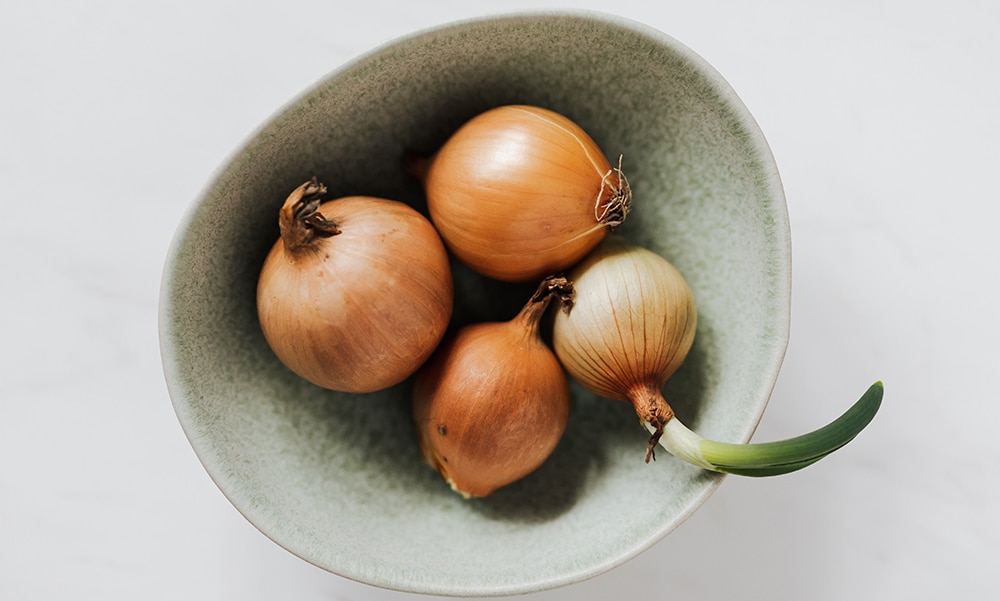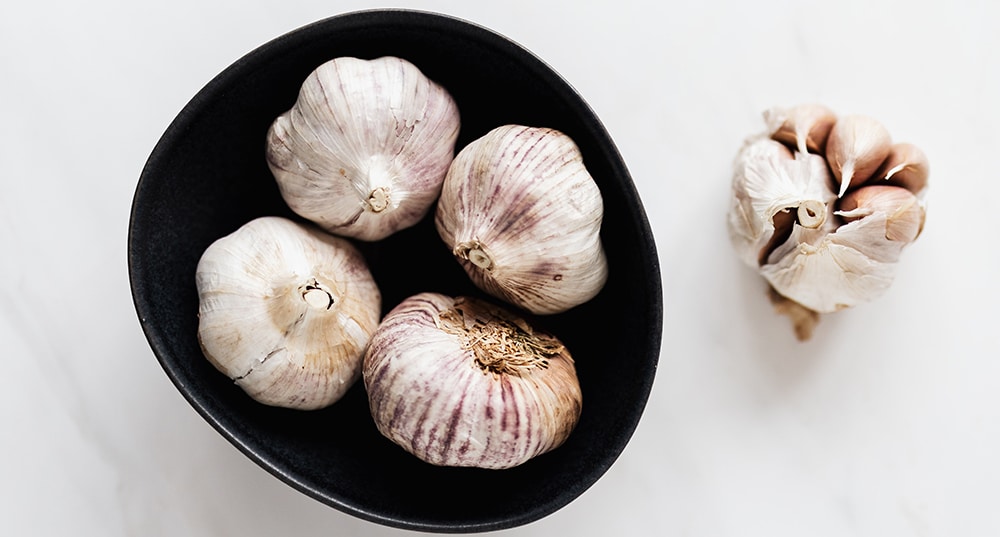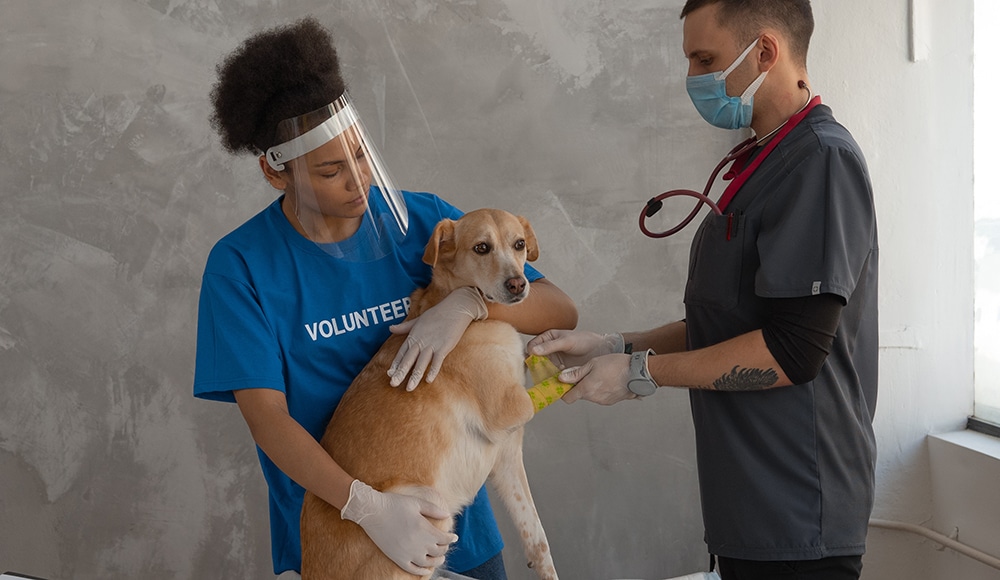Many dog owners share food scraps with their dogs or allow them to clean up items dropped on the floor. While this may not harm the pet, there is a very real possibility that the food contains ingredients and toxins which are safe for human consumption but very dangerous and toxic for dogs.
Symptoms from these toxins can range from vomiting and diarrhea to liver failure and pancreatitis. Knowing which foods are bad for dogs can help prevent opportunities of accidental consumption.
This blog explains which foods are toxic for dogs, food poisoning symptoms in dogs and what to do when your dog has eaten toxic foods.
Avocados
Don’t share your guacamole recipe with your dog, even if it’s a hit at the party. This fruit has a fungicidal toxin called persin that is present on every part of an avocado. Canines are more resistant to persin than other animals, though it is always good to err on the side of caution. When too much of the noxious substance gets into a dog’s digestive tract, it can cause diarrhea and vomiting in about 24 to 48 hours.
The high fat content in avocados and the pit of the fruit pose even more problems for your pooch. Though high fat is excellent for a human’s health, it can result in serious health conditions like pancreatitis in dogs. The pit is also seen as a choking hazard.

Grapes and Raisins
The toxin in grapes and raisins has not yet been identified. A canine can develop kidney failure or renal failure one to three days after eating these snacks, and can also be fatal for dogs.
It’s unknown how much of this fruit needs to be consumed before symptoms start to appear. A general stance is that no dog should eat any amount of grapes or raisins.

Raw Bread Dough
The yeast in raw bread dough is the culprit when it comes to harming dogs. The substance immediately starts to expand the second it enters the stomach and introduces ethanol into the bloodstream. The longer the yeast remains inside a dog, the more damage it does to the pet. Some conditions that could develop are metabolic abnormalities, central nervous system depression, GDV, ataxic and poisoning.

Chocolate
Chocolate is a delicious treat for humans but is detrimental to our furry friends. This dessert contains theobromine and caffeine which are both toxic to dogs. The darker and richer the chocolate, the more of these toxins it contains. Any problems will appear six to twelve hours after a dog eats chocolate.
Consumption can result in vomiting, increased thirst, heart rhythm abnormalities, seizures, diarrhea and more. Symptoms vary depending upon how sensitive each dog is to the poisonous substances.

Onions
Never let your dog near onions, as this vegetable contains compounds called disulfides and thiosulphates. These toxins are present in onions, onion flakes and onion powder. When ingested they damage a dog’s red blood cells which can result in the animal developing hemolytic anemia, Heinz body anemia or methemoglobinemia.
Symptoms like vomiting and diarrhea can occur in dogs anywhere between 24 hours and a couple of days after devouring the onion. Anemia symptoms can take up a week or longer to appear.

Garlic
Garlic is in the same vegetable family as onions and is reported to be the most dangerous. The disulfides and thiosulphates compounds cause the red blood cells to become very fragile and rupture. A dog eating this bulbous plant will vomit or have diarrhea within one to three days. Red blood cell damage will result in anemia with symptoms appearing anywhere between a few days to seven days after consumption.

Xylitol
Xylitol is a natural sugar alcohol commonly used as a sugar substitute and is found in fruits, vegetables and other plants. When digested by canines, it quickly absorbs into the bloodstream and can release a dangerous amount of insulin from the pancreas. This results in a rapid decrease in blood glucose within 10 to 60 minutes of consuming the sugar alcohol.
Symptoms of xylitol poisoning include vomiting, weakness, collapse, decreased activity, seizures and incoordination. These symptoms can progress into liver failure and hypoglycemia which, if not treated, can be fatal.
Xylitol can be found in flavored water, sugar-free candy, gum and some brands of peanut butter.
Macadamia Nuts
Macadamia nuts are listed as one of the worst things you can give your dog. These nuts cause weakness, depression, vomiting, tremors and hyperthermia in only three to six hours after being eaten. Consumption of this food can also trigger pancreatitis. It is not known which toxin causes this mayhem in dogs.
What Should I Do if my Dog Ate Toxic Food?
Take the toxic food away from your dog if they are still eating the substance. The canine may try to eat faster or get aggressive when you separate them from the food. If this is the case, try using a dog treat to distract and coax them away from the toxic substance. Once you’ve removed the food from your dog’s reach, take the time to analyze the type of toxin it is and how much they ate.
If you don’t witness a dog consuming poisonous food, it can be hard to know what they ate. If you suspect your dog has eaten something poisonous, make a list of food items which were potentially accessible, what symptoms your pet is showing and whether you see any foreign objects or abnormalities in their vomit or poop.
Contact your dog’s veterinarian as soon as possible and relay all the information gathered. Depending on which toxic food was consumed and how much, the vet will determine the best course of treatment for the dog.

Leave Human Food for Human Consumption
Research which foods or ingredients are harmful for your dog as your first line of defense against food poisoning. The majority of human food is not meant to be digested by canines, though most meat and some vegetables are safe for dogs.
Keep the foods listed above out of paws’ reach, and pay attention to what your dog eats on a daily basis both at home and in public. If your pet shows signs or symptoms of food poisoning, attempt to identify the source of the toxin along with the amount consumed and the time it occurred.
Remember to call the vet immediately after separating the substance from the dog if you believe that your canine has consumed food that is toxic.


